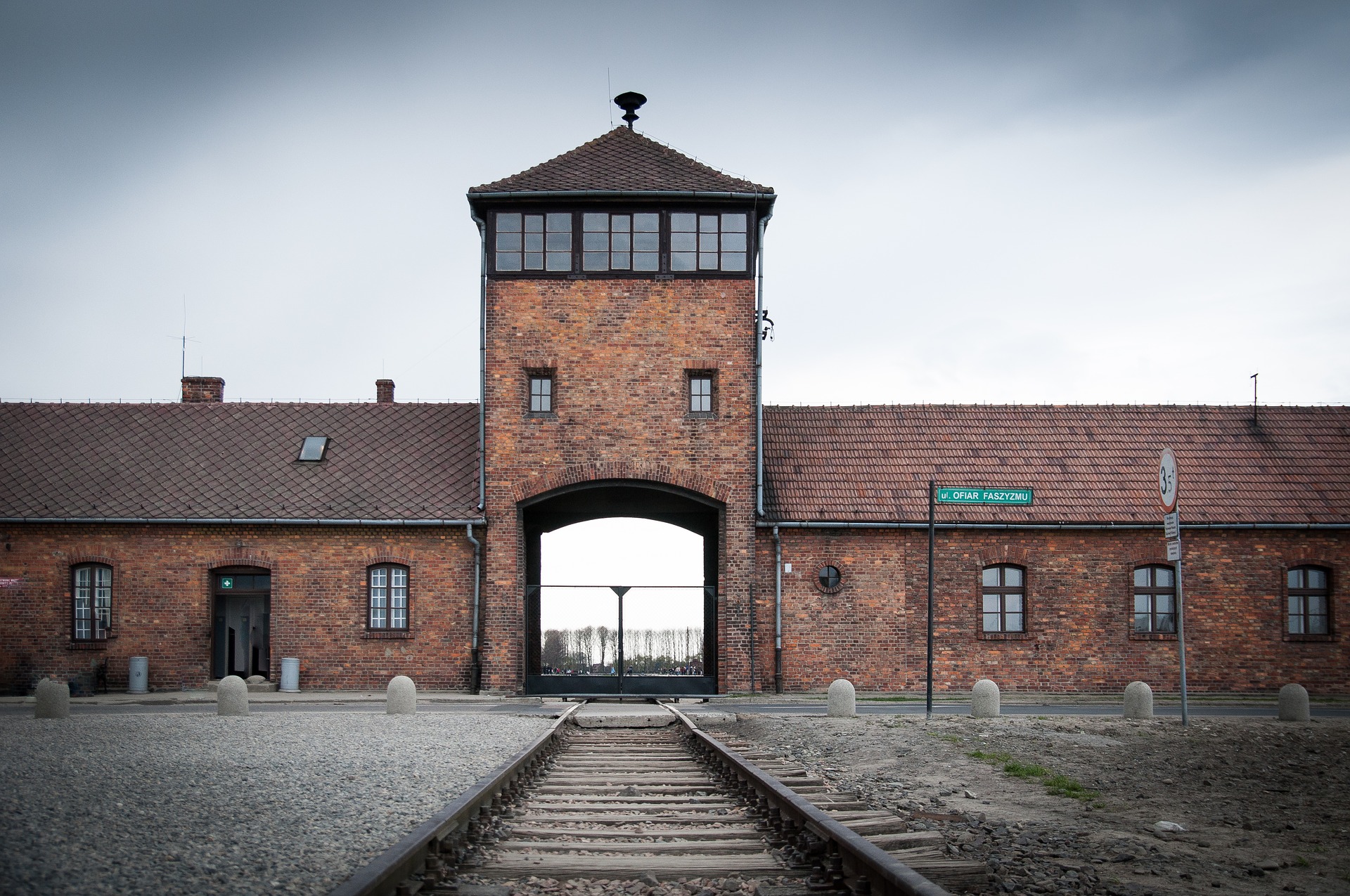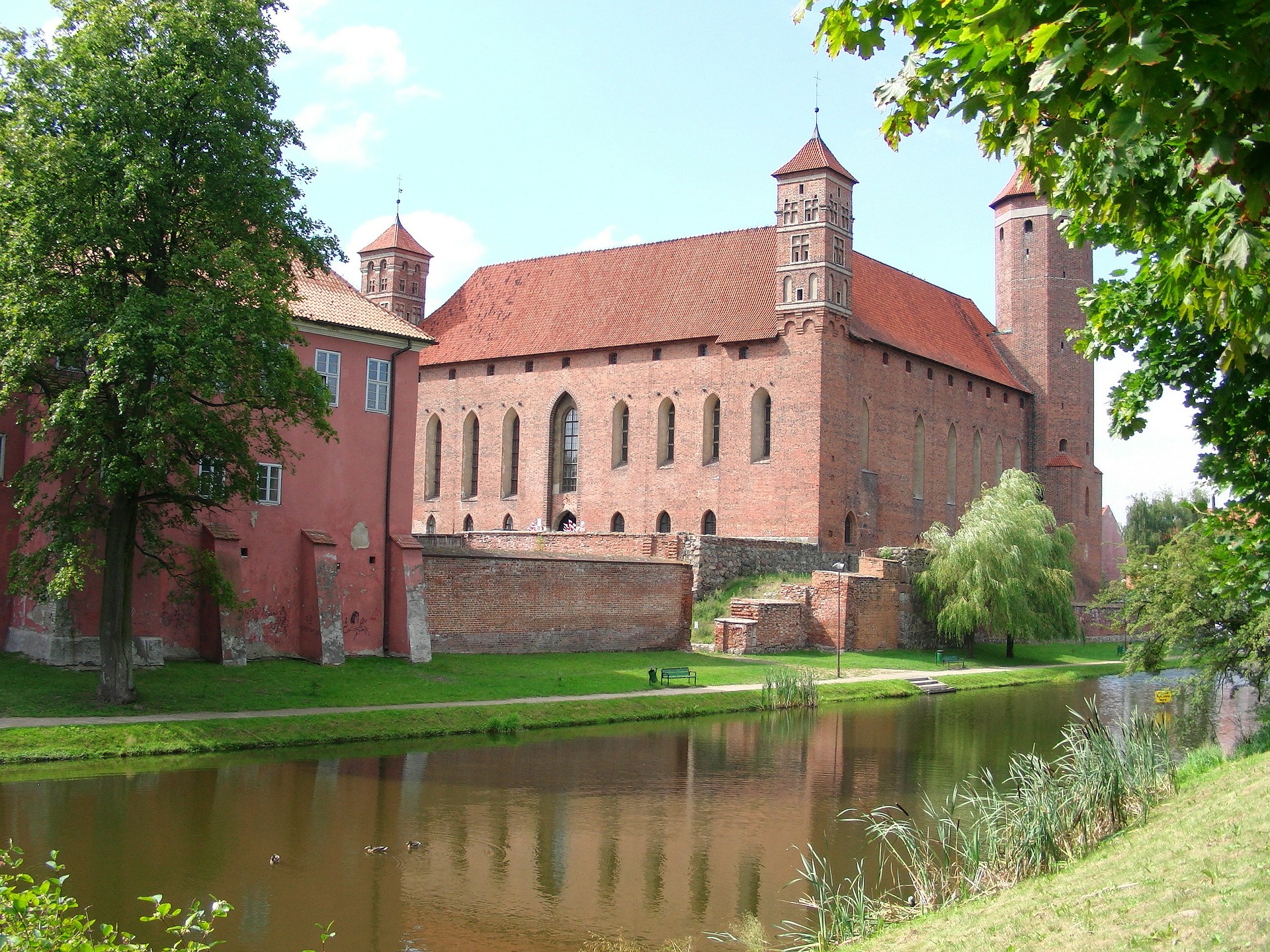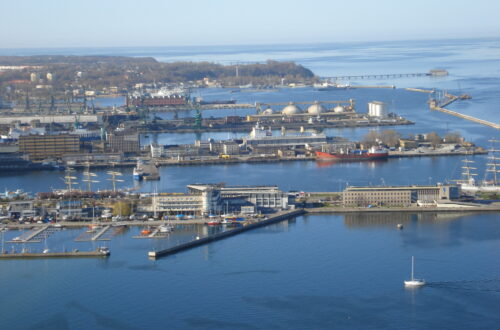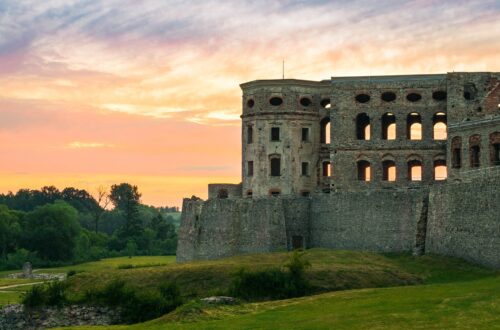Pieskowa Skala Castle in Poland
Pieskowa Skała Castle in the Krakow-Czestochowa Upland is a real architectural gem, located in the Ojców National Park. The Renaissance castle welcomes all tourists and captivates with its beauty. The building was created as a part of the fortification chain called Nest Trails, protecting the trade route from Krakow to Silesia. Currently, it is one of the few well-preserved monuments of Renaissance architecture in Poland.
History
The first mention of this stronghold dates from 1315 and appears in a document signed by Władysław Łokietek, in which the German name Peskenstein of the castle comes out. Probably it is a fortification erected by Henry the Bearded to protect the road connecting Kraków with Silesia.
King Casimir, the Great, built a Gothic castle here, which is part of the so-called Eagles’ Nests. The royal watchtower stood on a rocky promontory and consisted of an upper and lower castle. The first one, with a high residential tower, has not survived to this day and was located on an inaccessible rock called Dorotka. Eventually, it collapsed in the nineteenth century.
The lower castle stood in place of today’s’ Renaissance courtyard and was surrounded by defensive walls. It remained in the hands of various powerful families – Szafraniec, Zebrzydowski, Wielopolski, and Mieroszewski. Interestingly, in 1787 King Stanisław August Poniatowski visited the Pieskowa Skała castle.
At the beginning of the 20th century, the castle was restored and transformed into a guest house, an archaeological and natural museum was also created here. After the end of World War II, Pieskowa Skała became the property of the state and was initially supervised by the Ministry of Agriculture.
Fortunately, as early as 1950, the castle was taken over by the Ministry of Culture and Arts, and in the same year, a thorough renovation and – simultaneously conducted – architectural research and conservation works began. At that time, previously built arcade cloisters were unveiled, mascarons were extracted from the plaster, wall paintings were discovered, and a geometric garden was created in the Italian style.
It was decided that the castle in Pieskowa Skała would be a branch of the Wawel Royal Castle museum. The exhibition, presenting part of the Wawel collection, was opened to tourists in 1970.
In 2014, renovation and conservation work began, co-financed by the EEA Financial Mechanism 2009-2014 and the Norwegian Financial Mechanism. The castle was again open to the public in 2016.
Just in front of the castle in Pieskowa Skała, there is a Hercules mace – limestone rock rising to a height of 25 meters. It is a very characteristic element of the Pradnik Valley landscape. At the top of the mace is a small iron cross commemorating its capture in 1933.
According to legend, the club was in the Prądnik valley because of the devil. It was to be one of three works carried out on the orders of wizard Twardowski.
At the foot of the castle hill, there is a complex of 5 ponds founded in the 16th century.
Architecture
In the silhouette of the building, layers of several centuries are visible. The oldest Gothic elements include a round tower and the lower part of the premises of the actual castle. Gothic remains are also in the gate tower from the fourteenth century. In the western part of the courtyard on the ground floor, there are two medieval arcades.
One of them houses a well, 56 meters deep. The castle with a renovated two-story loggia and a magnificent courtyard with two-story cloisters is primarily the work of Stanisław Szafraniec and dates from the 16th century. The castle also has a baroque chapel and bastion fortifications with an entrance gate decorated with Zebrzydowski’s coat of arms.
In the crypts at the castle in Pieskowa Skała, there are four mannerist sarcophagi of the Sieniawski from the 17th century. Originally they were in one of the most significant Polish mausoleums in the chapel in Brzeżany in Podolia. The church and chapel were utterly devastated after 1945. Fortunately, sarcophagi survived thanks to their deportation during the Polish-Russian war in 1920 to Krakow.
Visiting Castle
You need around 2 hours to visit the castle interiors. There are quite a few rooms and lots of exhibits to watch.
Opening Hours
- March – April 24
minimum groups of 15 people
sightseeing in 9.00-15.00
after prior reservation / at least one day in advance /
- April 25 – October 31
Monday 9.00-13.00
Tuesday-Friday 9.30-17.00
Saturday, Sunday and working public holidays 10.00-18.00 (October – until 17:00)
- November and December
Tuesday-Friday: visits only for groups of minimum 15 people; reservation needed one day in advance
Saturday-Sunday – entries at fixed hours: 9.00, 10.00, 11.00, 12.00, 13.00, 14.00, 15.00
- The museum is closed: on Mondays • January 1 • Holy Saturday and Easter Sunday, • November 1 • November 11 • December 24 and 25
Ticket Prices
“The history of European art “+ “History of Pieskowa Skała”
- normal: PLN 11
- reduced: PLN 9
“Gallery of English Painting” + “History of Pieskowa Skała”
- normal: PLN 10
- reduced: PLN 6




